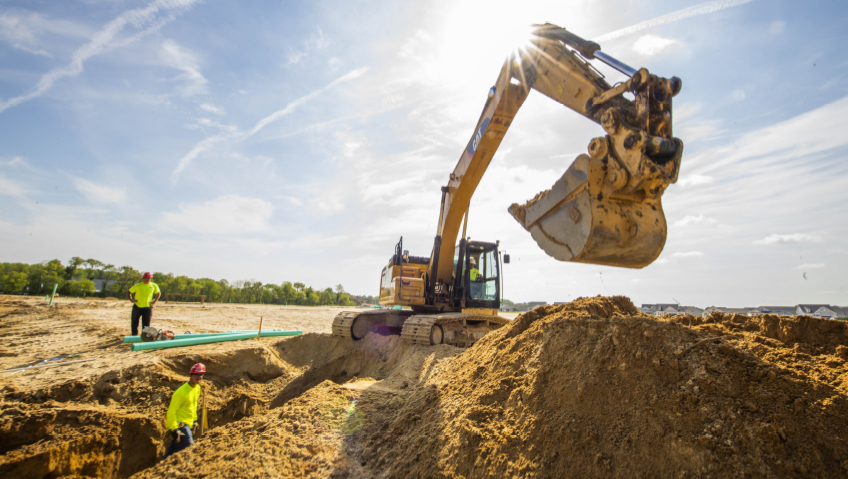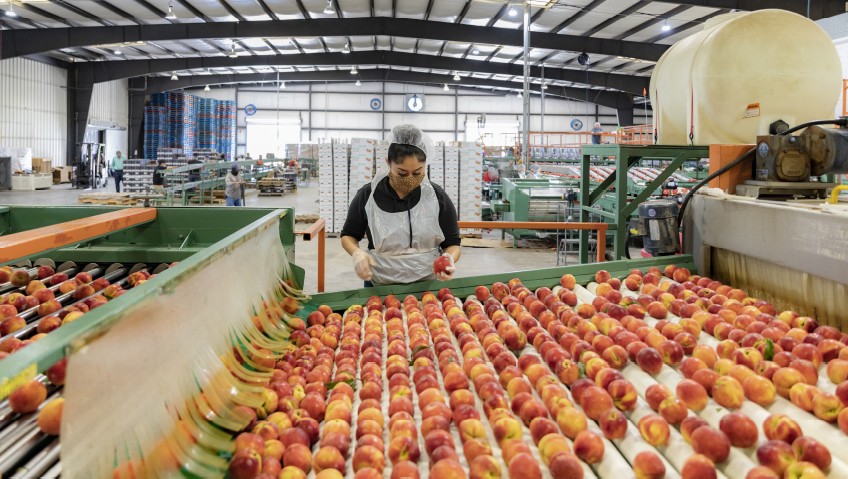What do the automobile and meat-packing plants have in common? The answer: Henry Ford.
In 1913, Henry Ford, inspired by continuous-flow production flour mills and canneries, as well as Chicago’s meat-packing plants, was the first in America to install a moving assembly. Machines automatically stamped out parts and workers made motors and transmissions on rope-and-pulley-powered conveyor belts.
His innovation reduced the time to build the Model T from 12 hours to about 93 minutes.
This was a big deal in many ways. Mass production meant more affordable products for consumers and a revolutionary shift away from local crafting to industrial manufacturing.
Everything was humming along fine for businesses until a massive disruption struck. In 1918, WWI consumed the nation’s focus. Almost overnight, automakers and other manufacturers pivoted operations to produce war boats, military trucks, cannons and many other crucial war-related products.
Fast-forward to 2020, and it’s déjà vu as Ford and others are making a warlike effort to re-tool factories to produce life-saving ventilators for COVID-19 patients.
Amidst this shift, the pandemic has also raised a serious question: the U.S. is a manufacturing powerhouse in many sectors, but why do so many basic items have to be imported? For example, India supplies America with about 40 percent of its over-the-counter and generic prescription drugs, while the majority of laptop parts, Hasbro toys, and in-demand appliances are made in China.
So, when global supply chains are disrupted, there can be a shortage of goods. That shortage can be a wake-up call to businesses to look at building a local supply chain to make them much more resilient to unexpected change, providing shorter turnaround times for producing goods while supporting the local economy.
But it’s complicated.
The days when a single vertically-integrated manufacturer like Ford or General Motors could design and manufacture all or most of the components and subassemblies needed to make a finished product are gone. In the pre-COVID competitive globalized market, it was essential to get the best parts and ingredients at the lowest cost. While Ford’s Michigan-assembled Mustang may be considered as American as apple pie, its transmissions originate in China, France, the U.K. and Mexico.
Consider the interdependencies of supply chains: electronic product companies rely on suppliers across Asia. Pharmaceutical makers in India rely on Chinese suppliers of active pharmaceutical ingredients. Companies that need industrial enzymes source them from Denmark.
Technology is highly complex, so manufacturers turn to narrowly-focused specialists and subcontractors. Many rely on precision toolmakers in Switzerland, Germany or Italy, or robot makers in Japan or Germany.
While it might seem appealing for the White House to invoke the Defense Production Act and force automakers to pivot to manufacturing medical ventilators, as the Harvard Business Review says, “it is very difficult for them to ramp up production if key components like pressure sensors or valves are made by an offshore specialist. Even something as simple as an N95 mask made in the United States by 3M uses (according to the label on the box) globally sourced materials.”
So how do businesses move forward with more local production?
Economists talk a lot about digitization to transform shop-floor operations, manage goods in the supply chain, and leverage Big Data to understand changing customer needs and expectations. A recent McKinsey Global Institute study on the risks and resilience of the global supply chain highlighted Nike as a company that has come out ahead in the COVID world.
Nike had already invested in building an understanding of where goods were in its supply chain through a digital platform linked to its contract manufacturers, explains Susan Lund, an economist and partner at McKinsey. “When COVID hit in January, Nike was able to see what products it had, reroute goods that were headed toward the brick-and-mortar stores that were shut down now, toward ecommerce fulfillment centers.”
Nike shifted its strategy to focus on marketing goods the company had in stock, not ones that it was planning to have. The result was a first quarter sales decline, but significantly less so compared to its competitors. “So that agility is a great example of how this does pay off over time,” Lund says.
The study also looked at the premium on speed to market for any good that is sold to customers and on capturing shifts in demand. In the fashion world, for example, if an influencer like Meghan Markle uses a certain handbag, it flies off the shelves. Having suppliers close and taking less time to get products to market is an important strategic advantage in a world dominated by instant social media posts and tweeted news.
How do you build that local supply chain? A starting point is an analysis of the local market and defining the capability of local suppliers. Some may be open to converting operations to produce new lines.
“There may be plenty of opportunity to unlock the potential of the local suppliers,” Forbes reports. “There are also significant advantages for buying local: transportation costs are considerably cheaper… and overall risk and uncertainty is reduced. Such benefits may offset the price hikes.”
Other strategies include supplier development – manufacturers are advised to look at providing technical assistance to local suppliers, supporting their expansion and development of new capabilities.
Encouraging suppliers to merge with others can increase their ability to produce at scale. Companies like IBM have used this technique to create suppliers that can service Big Blue’s global demand. While this is great if you’re a large corporation, what if you’re a small, local company? Actually, you can take the same approach, bringing together smaller suppliers to forge a consortium to match any potential shortfall created by developing a local supply chain.
There’s also the impact of stressing “local” in marketing. A 2019 Nielsen study of consumer behaviour found that “buying local” had the highest resonance among U.S. shoppers: 46 percent of respondents identified buying local as most likely to influence a purchase decision.
Consumers are more aware than ever before that supporting local products and production stimulates the local economy. The community gains revenue, jobs are created or retained, and families and cultures continue to thrive. Purchasing locally also means knowing a bit more about quality control because certain goods have been produced in a way that meets strict regional and national standards.
In the financial stress of these uncertain times, are consumers buying the cheapest options from multinational companies, or is the push to buy local having an effect? Right now, maybe not so much – Amazon’s third-quarter earnings have soared as pandemic sales tripled profits. Certainly, at-home shopping is convenient, comfortable and safe. Reaching customers through digital marketing and ecommerce is the future for local companies just as much as large corporations.
Doing business within the border is likely to be an issue for many years to come as the pandemic effects wax and wane. Reliance on offshore suppliers will be a challenge for most manufacturers and the need to source locally is an emerging reality.
Is this the end to globalization?
Likely not, but the rise of localization is definitely a trend to pay attention to in the post-COVID world.






